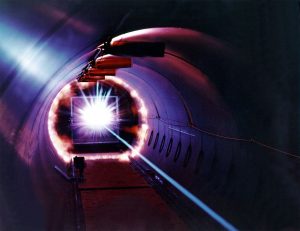
Drilling is a cutting process that requires the use of a rotating cutting tool known as a drill bit to cut a circular hole into a workpiece. When the drill bit is placed against the workpiece and activated, it rotates to scoop out material from the workpiece, thereby creating a circular hole. Used for both consumer and commercial applications, it’s one of the oldest and most commonly used cutting processes.
There are different types of drilling processes, however. Spot drilling, for example, involves cutting a small hole into a workpiece for the purpose of cutting a larger hole. With spot drilling, a pilot hole is created using a drill bit. A larger drill bit is then used to cut a larger hole over the existing hole. One of the latest drilling processes, on the other hand, is laser drilling. While the technology is still being perfected, laser drilling could become a highly effective and efficient drilling process.
Laser Drilling Explained
Laser drilling is a drilling process that uses laser light to cut into holes into material. All other drilling processes use a physical drill cut, which typically rotates to scoop out material from the workpiece. Laser drilling, however, leverages the thermal energy of laser light to cut holes into workpieces.
When a workpiece is exposed to laser light, the material from which it’s made will melt. At the same time, the melted material will vaporize into the surrounding environment. This means laser drilling doesn’t produce swarf like with other drilling processes.
Laser drilling doesn’t use a continuous beam of laser light to cut holes into workpieces. Rather, most laser drilling is performed using pulses of laser light. Each pulse burns and vaporizes material off the workpiece until the desired results are achieved. Regardless of what material or materials a workpiece is made of, laser drilling can easily create holes in it with extreme precision.
What Is Laser Drilling Used For?
Because it’s a more expensive drilling process, laser drilling isn’t used in many applications. Rather, it’s applications are generally limited to automotive engine blocks, airplane engines and printed circuit boards (PCBs).
Laser drilling is capable of producing small holes with extreme precision. According to Wikipedia, the holes created by laser drilling can be as small as 0.002 micrometers. Furthermore, laser drilling can create holes with a high aspect ratio. Aspect ratio refers to the depth of a hole relative to its diameter. High-aspect-ratio holes are essentially deep holes with a small diameter.
